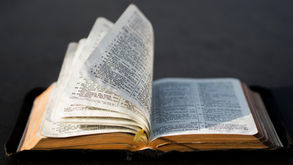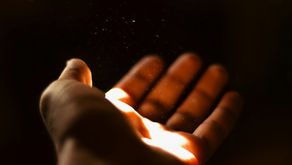Memorials of the Faithful Revisited
- Uplifting Words

- Jan 12, 2019
- 7 min read
A review of this historical work by `Abdu'l-Baha

With penetrating detail, crisp style and emphasis on the compression of facts; with vivid images, usually not more than three or four pages, with a concision of explanation or commentary, with a specific point of view, a style of biography has continued from classical times into the twentieth century. This is biography in miniature. It has a certain bias toward the person over the event, toward art as smallness of scale, toward structuring the confusions of daily life into patterns of continuity and process. There is a broad intent to sustain an interpretation or characterisation with facts teased, coloured, given life by a certain presentation and appraisal. Facts about the past are no more history than butter, eggs, salt and pepper are an omelette. They must be whipped up and played with in a certain fashion.¹
Nadel goes on to say that the “recreation of a life in words is one of the most beautiful and difficult tasks a literary artist can perform.”¹·¹ Freud said the recreation of a life, the getting at the truth of a life, can not be done; and if someone does do it, as inevitably biographers try, the result is not useful to us.¹·¹¹ People have been trying to write about the lives of others for millennia and, even if Freud is right, they will probably go on doing it. ‘Abdu’l-Baha gives the exercise a parting shot, to put it colloquially, in the evening of his life. His work, Memorials of the Faithful, is squarely in the tradition Nadel describes above: commemorative, didactic, ethical, psychological. His is a work of art as well as information, a work of pleasure as well as truth. His is a work of selection, as biography must be if the reader is not to be snowed in a mountain of useless detail. He unravels the complexities of seventy-seven lives and in doing so he answers Virginia! Woolf’s questions: ‘My God, how does one write a biography?’ and ‘What is a life?’ If one can not answer these questions, Woolf wrote, then one can hardly write a biography.¹·¹²
The act of reading Memorials of the Faithful is an opportunity to see how ‘Abdu’l-Baha answers Virginia Woolf’s seminal questions about life, how He answers them again and again in the more than six-dozen of His biographies in miniature. Biographers and auto biographers arguably have one freedom, a freedom that overrides the genetic and social forces that determine so much of human life.¹·¹³ It is the freedom to tell the story, the narrative, the freedom to explain a life, any life, even one’s own life to themselves and others the way they desire. This freedom is part of that active force of will that ‘Abdu’l-Baha wrote, in his pithy summation of the historic philosophical issue of ‘freewill and determinism,’¹·² is at the centre of all our lives.
Of course, it is incontrovertible that what has happened in a life has happened. There is no going back to change any one of the events, decisions or results. Life bears the stigmata of finality. There has been a relentless succession of facts, at once inflexible and in some ways arbitrary. All story-tellers are slaves to these facts, if their story is to enjoy the imprimatur of truth.
Charles Baudelair once wrote that a biography “must be written from an exclusive point of view, but from the point of view which opens up the greatest number of horizons.”¹·²¹ There are many ways in which one could define the point of view in this subtle and deceptively simple book. The point of view is that of a lover of Bahá'u'lláh, one who wants to be near Bahá'u'lláh, one who wants to serve Bahá'u'lláh. The point of view is really quite exclusive. All the men and women in this biographical pot-pourri were lovers of the Manifestation of God, the most precious Being ever to walk on this earth; and they all had some relationship with Him during the forty year period of His ministry: 1852-1892.
Restless is a dominant theme, a strong characteristic, in the lives of many people 'Abdu'l-Baha describes. They 'could not stay quiet', 'had no rest', were amazingly energetic', 'awakened to restless life', plagued by yearning love'. Nabil of Qa'in was 'restless, had no caution, patience or reserve'.¹·²² Shah Muhammad-Amin "had no peace" because of the love that smouldered in his heart and because he "was continually in flight'.¹·²³ This restlessness 'Abdu'l-Baha sets down among a galaxy of other qualities and a multitude of other people. Some of the most outstanding believers had this restlessness. Tahirih was 'restless and could not be still'.
Quietness is also valued highly. One does not have to be a great talker to attract the attention of 'Abdu'l-Baha. Quietness also has its place in Baha'i community life. There are people who are 'inclined to solitude' and keep 'silent at all times'. They possess an 'inner calm'. They are souls 'at rest'.
The gregarious types and the type who keeps to himself are part of this quintessential dichotomy, a dichotomy that was as much a part of 'Abdu'l-Baha's world as it is our own, although there seem to be a slight preponderance of the gregarious person. Ustad Baqir and Ustad Ahmad both kept to themselves and "away from friend and stranger alike".¹·³ Mirza Muhammad-Quli "mostly...kept silent". He kept company with no one and stayed by himself most of the time, alone in his small refuge".¹·³¹ The more sociable type, like Haji 'Abdu'llah Najaf-Abadi "spent his days in friendly association with the other believers."¹·³² Ismu'llahu'l-Asdaq "taught cheerfully and with gaiety".¹·³³ "How wonderful was the talk, "says 'Abdu'l-Baha of Nabil of Qa'in, "how attractive his society".²
There are all of the archetypes that the various personality theorists have given us in this century. In addition to Jung's introvert and extrovert, there is the artist, the suffering artist-soul within us all, Mishkin-Qalam. He survives in all his seriousness, as we might, with humour. There are the types who William James describes in his Varieties of Religious Experience: the personality constitutionally weighted on the side of cheer and its opposite, the sombre, more reflective even melancholic type. The two carpenters, Ustad Baqir and Ustad Ahmad were examples of the former.²·¹ The examples we find of the latter were often the result of the many difficulties these lovers of Bahá'u'lláh were subjected to and wore them "to the bone."²·¹¹
‘Abdu’l-Baha addresses all of us, all of us on our journeys while He describes many of those He came to know in His life. For He is describing not only the lives of these men and women in the nineteenth century, He is describing us in our time. He is addressing us on our own travels. He addresses the restlessness in us all. He speaks to us in our victory and our loss. He speaks about what Michael Polanyi calls the tacit dimension, the silent root of human life, which is difficult to tap in biographies, the inner person. This private, this inner person, is the one whom He writes about for the most part. He sets this inner life in a rich contextualization, a socio-historical matrix. He describes many pilgrimages and you and I are left to construct our own. We all must shape and define our own life. Is it aesthetically pleasing? Intellectually provocative? Spiritually challenging? ‘Abdu’l-Baha shapes and defines these lives given the raw-data of their everydayness added up, added up over their lives as He saw them. How would He shape my life? Yours? How would we look in a contemporary anthology of existences with ‘Abdu’l-Baha as the choreographer and the history of our days as the mise en scene?
For He is setting the stage, the theatre, the home, for all of humanity. The extrovert is here, the introvert, those that seem predisposed to cheerfulness and those who seem more melancholy by nature. All the human dichotomies are here, at least all that I have come across in my own journey. They are the characters which are part and parcel of life in all ages and centuries, all nations and states, past, present and, more importantly, future. Here is, as one writer put it, the rag-and-bone-shop, the lineaments of universal human life, the text and texture of community as we all experience it in the crucible of interaction.
Memorials of the Faithful is what might well be this age’s Canterbury Tales, that compendium of personalities who exemplify, as William Blake once put it, “the eternal principles that exist in all ages.”²·¹² We get a Writer Who delights in other people but Who has an active and incisive mind, a practicality that He brings to bear on what are often difficult personalities. He dwells only on the essentials; His purpose is inveterate; His feelings sincere and intense; they never relax or grow vapid during His cursory analyses. He is exquisitely tender, but clearly wily and tough to survive in the burly-burly life of exile, prison and the unbelievable difficulties He had to bear along life’s tortuous path.
The heroic age was coming to a close when ‘Abdu’l-Baha put His pen to paper; and it was over by the time the Haifa Spiritual Assembly published His final book. ‘Abdu’l-Baha had played a prominent role in the epic that was the heroic age. He played a dominant role in writing that epic’s story. Memorials of the Faithful is an important part of that epic. This epic tradition was not essentially oral but quintessentially written: a written tradition par excellence.
By Ron Price
Footnotes
1. Ira Bruce Nadel, “Biography as Institution,” Biography, Fiction, Fact and Form, St. Martin’s Press, NY, 1984, pp.13-66.
1.1 Ira Bruce Nadel, "Biography as Institution", Biography: Fiction, Fact and Form, St. Martin's Press, NY, 1984, pp.13-66.
1.11 Sigmund Freud in Freud: A Life for Our Time, Peter Gay, W.W> Norton and Co., NY, 1988, p.xv-xvi.
1.12 Virginia Woolf in Nadel, op. cit., p.141.
1.13 ‘Abdu’l-Baha, Selections from the Writings of ‘Abdu’l-Baha, 1978, p. 198.
1.2 Arnold Ludwig, How Do We Know Who We Are? Oxford UP, Reviewed in New Scientist, 1.21 November 1997.
1.22 Charles Baudelair in Baudelair, Claude Pichois, Hamesh Hamilton, 1987, London, p.xiv.
1.23 'Abdu'l-Baha, Memorials of the Faithfulm Wilmette, 1970, p.
1.3 ibid.,p.51
1.31 ibid., p.46.
1.32 ibid.,p.73.
1.33 ibid.,p.71.
2. ibid.,p.6.
2.1 ibid.,p. 53
2.11 ibid.,p.73
2.12 ibid.,p.96.
2.13 William Blake in Geoffrey Chaucer: Penguin Critical Anthologies, editor, J.A. Burrow, 1969, p.82.
2.2 Heroic Epic and Saga: An Introduction to the World’s Great Folk Epics, editor, Felix J. Oinas, Indiana UP, London, 1978, p.1.




















